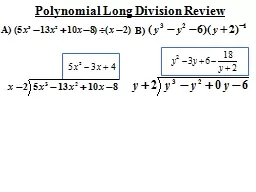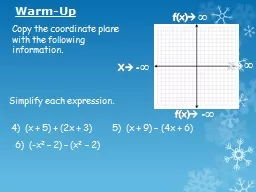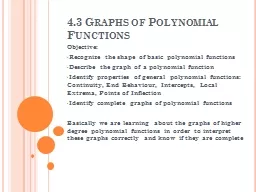PPT-Finding Zeros Given the Graph of a Polynomial Function
Author : yoshiko-marsland | Published Date : 2017-08-07
Chapter 56 Review Zeros of Quadratic Functions In the previous chapter you learned several methods for solving quadratic equations If rather than a quadratic equation
Presentation Embed Code
Download Presentation
Download Presentation The PPT/PDF document "Finding Zeros Given the Graph of a Polyn..." is the property of its rightful owner. Permission is granted to download and print the materials on this website for personal, non-commercial use only, and to display it on your personal computer provided you do not modify the materials and that you retain all copyright notices contained in the materials. By downloading content from our website, you accept the terms of this agreement.
Finding Zeros Given the Graph of a Polynomial Function: Transcript
Download Rules Of Document
"Finding Zeros Given the Graph of a Polynomial Function"The content belongs to its owner. You may download and print it for personal use, without modification, and keep all copyright notices. By downloading, you agree to these terms.
Related Documents














